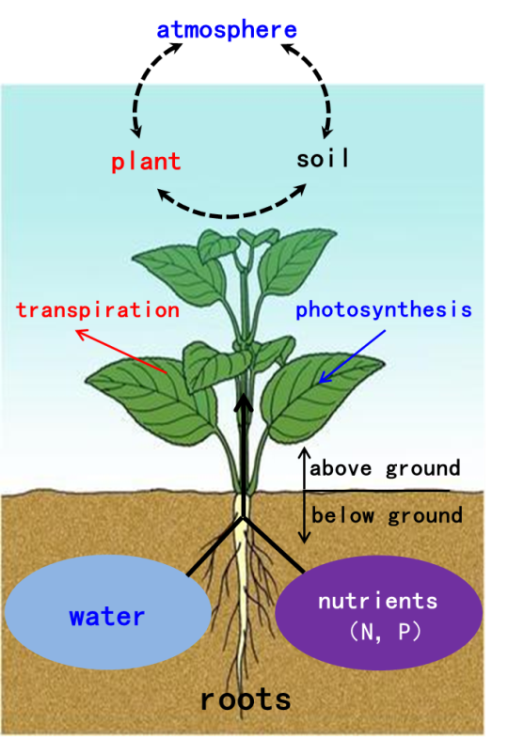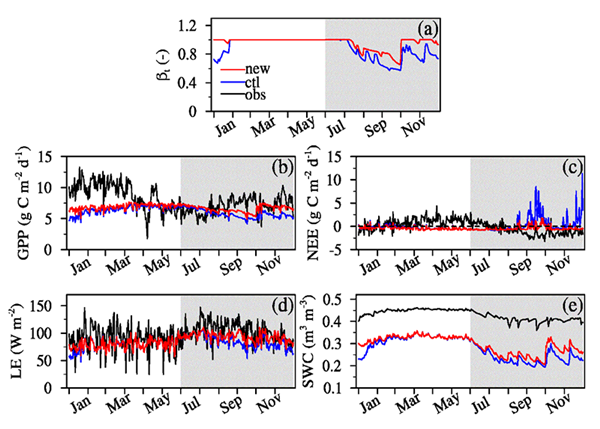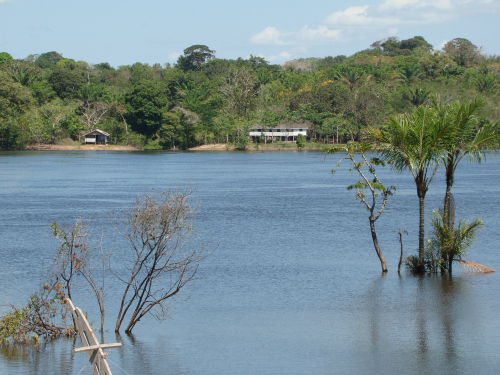A Dynamic Root Distribution Improves Carbon and Water Simulation in the Amazon during the Dry Season
Date:2016-06-23
Roots are responsible for the uptake of water and nutrients by plants, and connect the soil to the atmosphere through water and energy exchange between the canopy and atmosphere. An accurate representation of the root system in land surface process models is important for ecological, hydrological and climate modeling. Most land surface models currently prescribe rooting profiles as a function only of vegetation type, with no consideration of the surroundings. However, experimental results through measuring the root distribution under different irrigation and fertilization conditions indicate that the root distribution is not fixed and has the plasticity to dynamically respond to different environmental conditions.

Diagram illustrating the relationships among the atmosphere, plant, and soil.
In a recently published study led by Prof. XIE Zhenghui from the Institute of Atmospheric Physics/Chinese Academy of Sciences, a dynamic rooting scheme, which describes root growth as a compromise between water and nitrogen availability, was incorporated into version 4.5 of the Community Land Model (CLM4.5) with carbon–nitrogen (CN) interactions (CLM4.5-CN) to investigate the effects of a dynamic root distribution on eco-hydrological modeling. Two paired numerical simulations were conducted for the Amazon, one without the dynamic rooting scheme and the other including the proposed scheme, and evaluated using ground-based observations.

Difference among the simulated mean daily values of (a) soil water stress βt, (b) gross primary production (GPP), (c) net ecosystem exchange (NEE), (d) latent heat flux (LE) and (e) soil water content (SWC, mean of 0–20 cm) at the study site, averaged from 2001 to 2003 (grey areas indicates the dry season)
Results showed that the dynamic rooting scheme increased gross primary production and latent heat flux over the Amazon during the dry season and improved the simulation of the carbon and water cycle.

Vegetation over the Amazon (Credit: Igor Oliveira Ribeiro, Amazonas State University)
Implementing this dynamic root distribution scheme in modeling studies has the potential to foster a better understanding of the feedbacks between seasonal drought and carbon and water fluxes.
Reference
Wang, Y., Z. Xie, and B. Jia, 2016: Incorporation of a dynamic root distribution into CLM4.5: Evaluation of carbon and water fluxes over the Amazon. Adv. Atmos. Sci., 33(9), doi: 10.1007/s00376-016-5226-8. (in press)
Contact: JIA Binghao, bhjia@mail.iap.ac.cn
